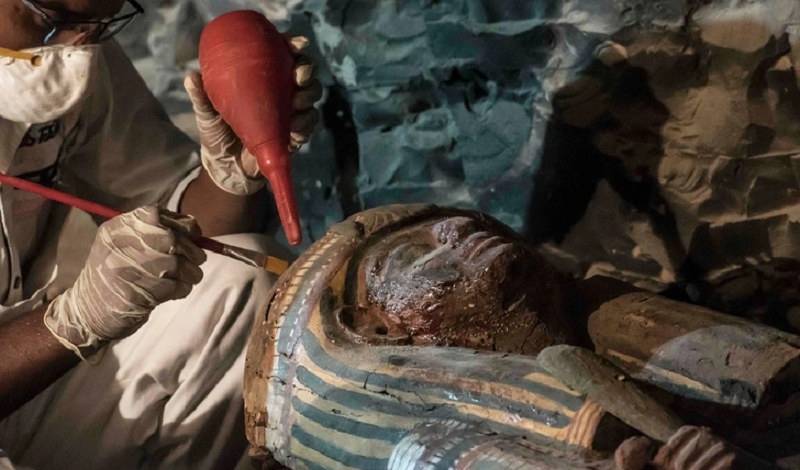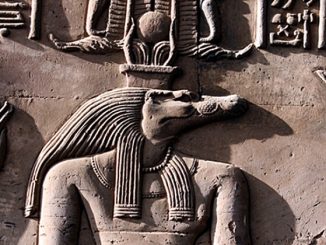Jewelry, mummies and 3,500-year-old coffins have just been found in the Egyptian royal tombs in a large cemetery.

This tomb was found in the Draa el-Naga cemetery, near Egypt’s famous Valley of the Kings, including a small room near the ground and a sarcophagus 8 meters deep underground containing 8 mummies.
The site’s original owner was a goldsmith named Amenemhat during the 18th dynasty (1550 BC – 1292 BC), during the reigns of kings Tutankhamun, Nefertiti and Hatshepsut.
The mausoleum contains remains, funerary objects, four wooden coffins, jewels, along with 150 small carved statues called ushabti (these statues are said to become servants to nobles in the next life) and other objects. other uses.
In addition, among the 50 ancient seals found this time, up to 40 belong to 4 different officials from periods that have never been discovered.
“This is a good sign. This means that if we continue, we will definitely be able to find more than these four tombs,” said Mostafa Waziry – the person leading this excavation.
Another discovery is that the mausoleum was used many times during the early stages of the 3rd Intermediate Period (1070 BC – 664 BC), in addition, 3 mummies in 2 coffins were also found nearby. from the Middle Kingdom of Egypt (2050 BC – 1800 BC).
Khaled Alnani, Egyptian Minister of Heritage, said these findings have great significance in all areas of national cultural life.
“This work is not over and we are confident that we will find many more discoveries next month,” Minister Alnani believes.
He also said that with many new discoveries, 2017 can be considered the year of archeology.
According to experts, today’s modern Egypt was built on the foundation of ancient Egypt. However, so far researchers have only found about 30% of Egyptian artifacts, the rest are hidden underground.
Last year, a Roman burial site was found near the Upper Egyptian town of Minya and more than 1,000 ushabti were discovered in a 3,500-year-old tomb near Luxor. In April, a pyramid was also discovered near the Dahsur burial site.



